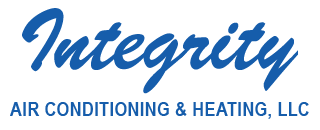
Your entire residence should be a sanctuary that’s warm and cozy in the winter and cool and comfortable in the summer. However, families who live in some two-story homes find the upper floor is stubbornly hotter or colder than the first floor.
This could simply be because most thermostats in a house are on the ground floor, which is where people spend the greatest amount of time—in the living room, kitchen, etc.—so it makes sense to set the temperature according to how it feels on the first floor.
However, temperature discrepancies between the upstairs and downstairs could also be due to problems with your HVAC system. Some of these challenges can be sorted out somewhat quickly while others might require more extensive and costly fixes. Here, the specialists at Integrity AC & Heating LLC will help you solve why the upstairs of your home is hotter than downstairs, or vice versa.
Why Is It Hotter Upstairs?
The phenomenon of the upstairs of a two-story home becoming hotter than the downstairs can be traced to several factors. For starters, heat rises, so it’s natural for the second floor of a home to get hotter than the first floor. Not enough insulation in the attic or roof can make this worse by letting heat transfer from the roof into the upstairs rooms.
Another common reason is that the air conditioner is not strong enough to cool the entire home, causing it to have difficulty cooling the upstairs effectively.
To deal with these issues, homeowners could add additional insulation in the attic and make sure their home has adequate ventilation. If there’s a question of whether the AC is the ideal size for the home, call an experienced HVAC company like Integrity AC & Heating LLC inspect the unit. A qualified professional also can help locate a unit that's better suited for your home if you want air conditioning installation or replacement.
Why Is My Upstairs Colder/Not Heating?
When the downstairs of your home is warm, but it’s freezing upstairs, that could result in an ice-cold night for anyone whose bedrooms are on the upper floor. The most frequent causes of an upstairs not heating like it ought to are the insulation levels and the ductwork.
Inadequate insulation allows cold air to filter through the home’s attic or walls and contribute to heat loss, causing colder temperatures on the upper levels. It’s crucial to make sure your home has a thick, level layer of insulation in the attic and adequate insulation in the walls to keep the cold out and the heat inside.
The ductwork in a home plays a very important role in circulating conditioned air throughout different rooms of the building. However, issues with the ductwork can cause the upstairs being colder than the main level. A typical explanation for this is improper airflow balance. The ducts may not be the proper size or design, which results in an uneven distribution of air between the floors. This can cause more warm air to go downstairs, leaving insufficient airflow—which is the heated air—on the upper level.
Another factor with ductwork is the location of the supply and return vents. If there are fewer vents on the upper floor or they are not correctly positioned, it can restrict air circulation and cause inadequate heating or cooling. Also, leaks or gaps in the ductwork can cause air loss, reducing the overall efficiency of the HVAC system and actually making the temperature difference worse.
To determine why the upstairs is colder than the downstairs, homeowners should hve their ductwork examined by skilled professionals like the team at Integrity AC & Heating LLC to identify any imbalances, leaks or inadequacies. Sealing leaks and adding new vents or adjusting existing ones can help improve airflow and ensure a more even temperature balance between the upstairs and downstairs.
What Do I Do to Fix a Hot/Cold Upstairs?
If your upstairs is hotter or colder than the lower floors of your residence, an HVAC zoning system could be a great solution.
An HVAC zoning system divides the residence into distinct zones, which each have their own thermostat and damper system so the homeowner can customize the heating or cooling of each zone.
This system can be particularly beneficial in instances where the upstairs of a multi-story home is too hot or extremely cold while the main floor is comfortable. By implementing a zoning system, homeowners can control the temperature independently in each zone, allowing them to address specific hot or cold spots easily.
To learn more about an HVAC zoning system in Phoenix, call Integrity AC & Heating LLC. We’ve designed and installed customized home comfort plans for many community members and are happy to show how an HVAC zoning system could work in your home.
Why Is it So Humid Upstairs?
In addition to the upper story being hotter or colder than the rest of the house, another challenge in multi-floor homes is when the higher levels are more humid than the first floor.
A frequent reason for excess upper floor humidity is weak ventilation on the upper floor, which can result in higher humidity levels. As is often the case with temperature differences between floors, inadequate insulation or sealing in the attic or walls may let warm, humid air from outside the house infiltrate the upstairs rooms. Plus, if there are any leaks or plumbing issues on the upper floor, that can also cause unwanted moisture in that section of a home.
To manage humidity problems, homeowners can improve ventilation by getting fans or opening windows to promote airflow. Adding more insulation in the attic and better sealing the attic and walls can help protect against external moisture from entering the upstairs. Finding and repairing any leaks or plumbing issues is also imperative.
Depending on the levels of moisture found in the home, a whole-home dehumidifier could be another useful tool to manage humidity in your home.


